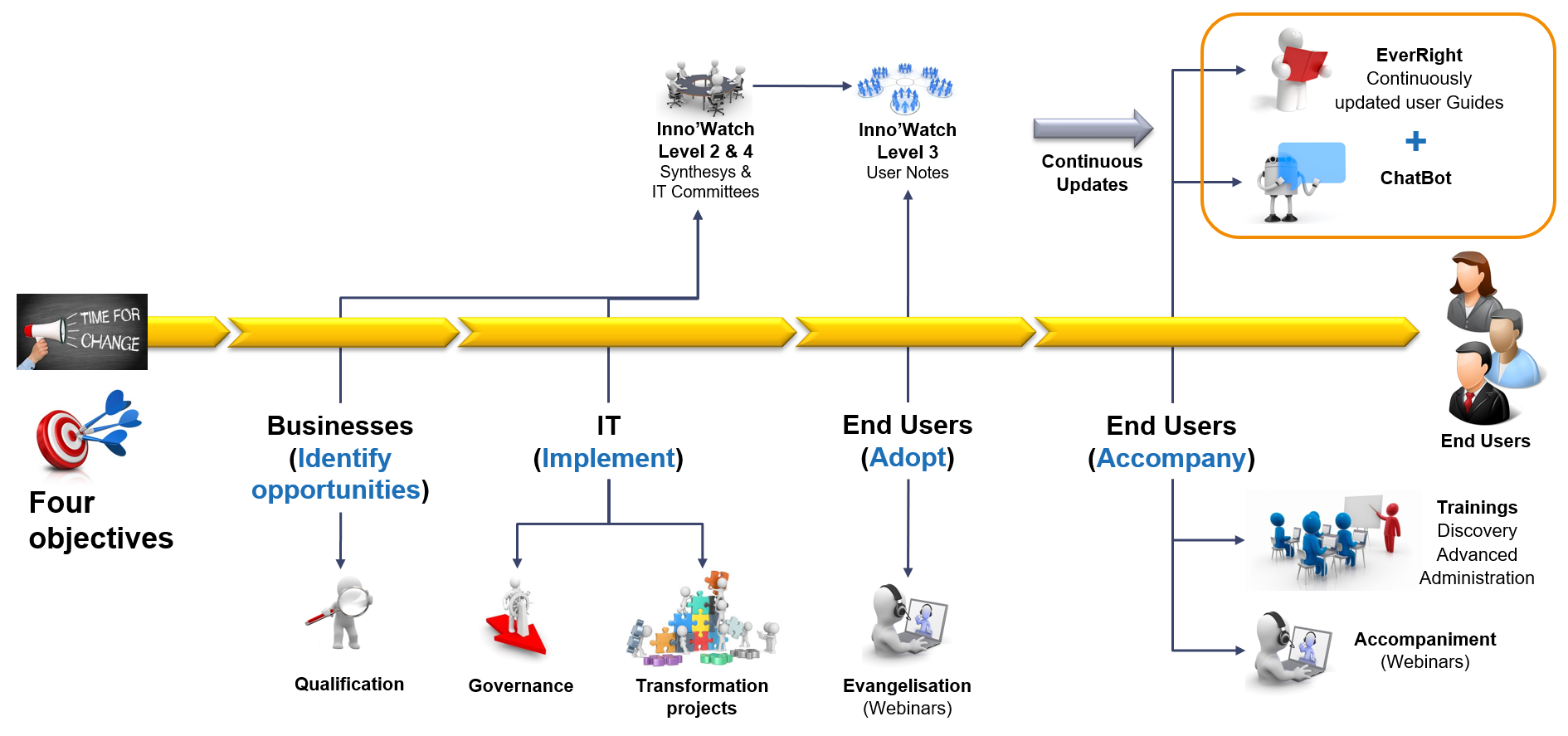SmartWay: Assisting you in Continuous Change Management
and Collaborative Digital Transformation
Distinguishing Continuous Change Management and Collaborative Digital Transformation
Continuous Change Management (IT) is generally a reactive approach of organizations, depending on changes in the context. In the Microsoft context, change management will often consist in setting up the uses and the Governance linked to the numerous evolutions of the platforms (eg: M365).
On the contrary, the Collaborative Digital Transformation is a voluntary and proactive approach, which consists in retro-analyzing the internal and external processes of the Company to identify opportunities for improvement, opportunities which can be linked to the evolution of solutions.
eCom CS accompanies you on these two facets.
Continuous Change Management
The end user is at the center of the concern here. The objective is to enable it to be as effective and efficient as possible, via choices made upstream by the Business and IT Departments.
eCom CS offers you a range of functional actions that allow you to transform changes in the IT context into adoption, usage and ultimately performance.
Apart from traditional change management actions (training, webinars, various support), the significant added value that eCom CS brings you is to support you in the continuous consideration of developments in M365 solutions, via our Watch offer called Innowatch, and EverRight / Chatbot our continuously updated user guides.
Support Collaborative Digital Transformation
On the sidelines of the continuous changes of the solutions which induce change management needs, the business processes often include more or less optimized, industrialized, automated sub-processes. The actors of these sub-processes have become accustomed (or not!) to undergoing them as they are, sometimes for many years, and sometimes no longer dare to think that it could be otherwise.
Thanks to InnoWatch, we are able to respond dynamically to business needs or irritants identified in the Businesses, at the pace of M365 developments.
Some field examples:
- Event management
One of our clients regularly organizes events and was struggling to manage registrations. Microsoft once made a major change to Bookings, opening up the possibility of managing multiple registrations for an event, rather than limiting them to a single registrant (which was valid for a hairdresser). The Bookings solution, which was not previously used by our client, was therefore able to help him manage his registrations, considerably reducing the time spent on this task as well as the resources required. - Field information feedback via smartphone
One of our clients sells raw materials to manufacturers. Some of the transactions are done “at the back of the truck” by the sellers. They then inform a sales assistant, in an unstructured and poorly traceable way (sms, whatsapp, email, phone call, etc.), to her great despair.
With the advent of Power Apps and Power Automate, we were able to offer and develop a Smartphone application that enabled sellers to track their sales in just a few clicks: What quantity, what type of material, delivered to what customer site, on what date, by which seller, for what price. The feedback was traceable in a Sharepoint list, with PowerBI reporting. - In-store restocking management
One of our customers (Retail) continuously manages its stocks of products on the shelves of its stores. The management of the restocking process was not optimal.
Power Automate and Power Apps have made it possible to set up a Smartphone application to scan the barcodes of missing products on the shelves, to log shortages, and to notify the person in charge of orders in the store.
This post is also available in: French


